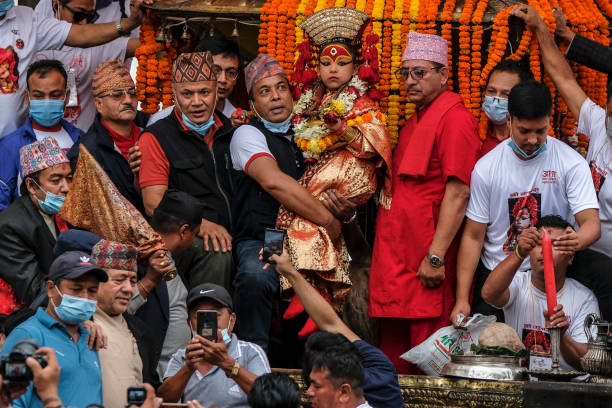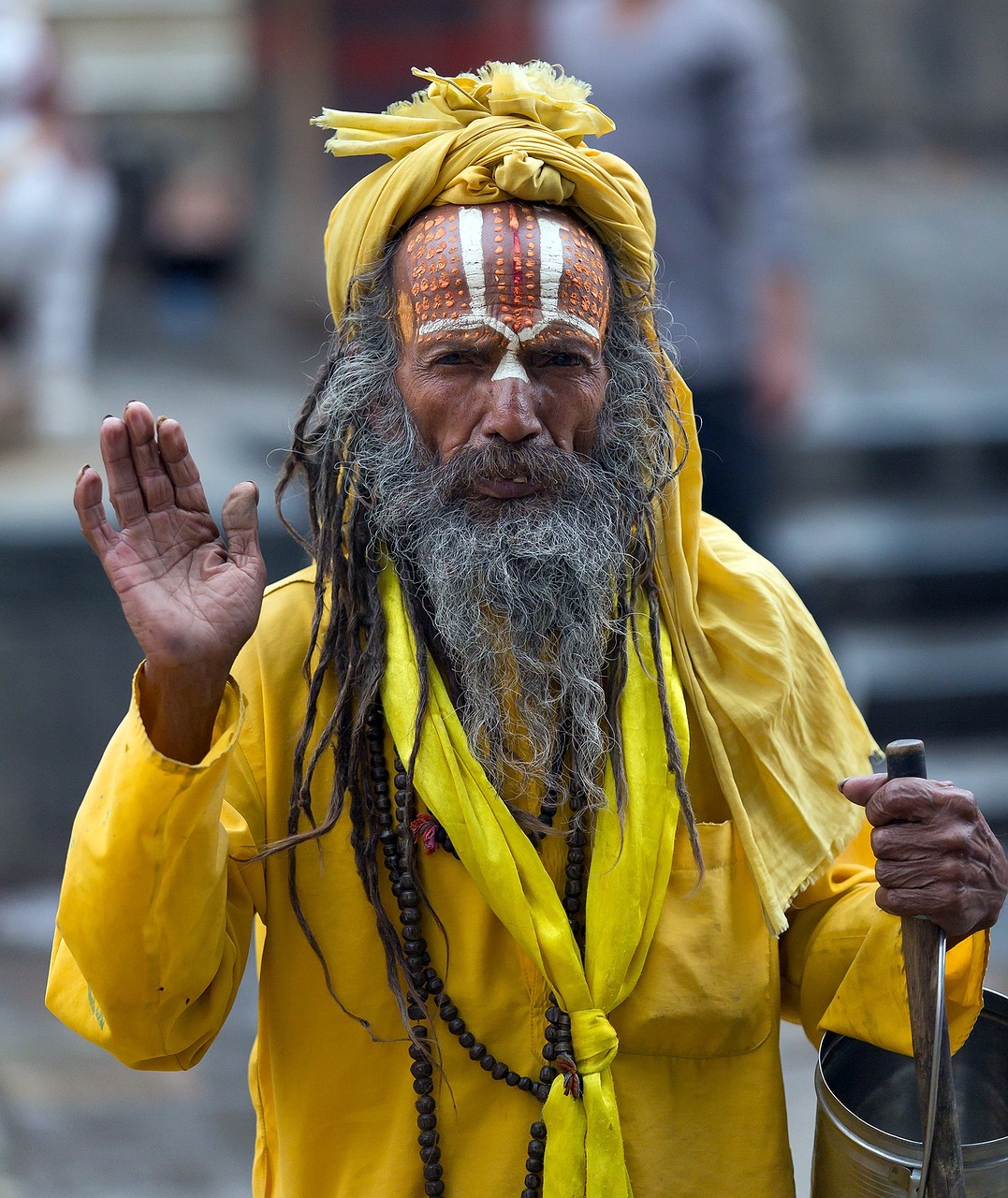Imagine the streets around Kathmandu alive with the beats of traditional drums and music, vibrant colorful decorations and the aroma of Samay Baji (traditional Newari food) offerings laid out in front of temples. Similarly, the air vibrates with energy as masked dancers leap through the crowds while ancient idols of gods are displayed outside, blessing devotees who gather from every corner of the city to witness this grand celebration. This is how the Indra Jatra festival in Kathmandu feels where music, dance, food and faith blend into one breathtaking celebration that has carried on for centuries.
Celebrated with great enthusiasm every year in the month of September, this eight-day festival honors Lord Indra, the god of rain and harvest, while uniting the city in devotion and celebration. For travelers, it’s one of the best chances to witness Nepal’s living culture, where gods, legends, and traditions come alive on the streets of the Kathmandu Valley.
The festival also marks the beginning of the harvest season and honors ancestors and deceased family members.
Story Behind The Festival
According to legend, Lord Indra, the Hindu god of rain, came to Kathmandu in human form to collect parijat (night jasmine) flowers for his mother, Dakini, for her religious ritual. He entered a garden where he was caught by locals who didn’t recognize him and was tied up. After few days, when his true identity was revealed, people released him and, to apologize, began celebrating Indra Jatra in his honor, asking for forgiveness and blessings for good rainfall and harvest.
The Significance of Indra Jatra
Indra Jatra is not only a religious festival but also a celebration of Kathmandu’s identity. It expresses gratitude for good harvests, seeks blessings for the future, and pays homage to deities who protect the city. The festival blends Hindu and Buddhist traditions, reflecting the unique harmony of the valley.
Festival Celebration Calendar This Year, September 2025
Indra jatra festival is celebrated for eight days spanning various cultural and ritual events. This year, the key day falls on 6 September , drawing the largest crowds and most cultural performances. Public holiday is observed in the Kathmandu Valley on this day, featuring its main festivities. The President, Prime Minister, Mayor and other high ranking dignitaries also traditionally visit and observe Indra Jatra on this day.
Main Events of Indra Jatra 2025 (Starting from September 4)
September 4, 2025 (Thursday)
- Yosin Pole (Indradhvaja Linga) Raising Ceremony in Basantapur Durbar Square.
- Marks the official start of Indra Jatra celebrations in Kathmandu.
- Kumari Jatra begins: Chariots of Kumari, Bhairav, and Ganesh are pulled through the lower part of Kathmandu.
- Large crowds gather to witness the unveiling of Swet Bhairav’s face in Hanuman Dhoka.
September 5, 2025 (Friday)
- Street performances and traditional dances like Majipa Lakhey, Devi Pyakhan, and Pulu Kisi (white elephant) are performed.
- Public gatherings and worship continue around Durbar Square.
September 6, 2025 (Saturday) – Main Festival Day
- Official public holiday in the Kathmandu Valley.
- Continuation of Kumari Jatra, with huge processions and cultural displays.
- Swet Bhairav continues to distribute liquor as prasad from its mouth.
- Major display of Lakhey and mask dances across major squares.
- Thousands of devotees offer prayers for rain, prosperity, and good harvest.
September 7, 2025 (Sunday)
- Kumari Chariot Procession through Upper Kathmandu (e.g., Ason, Indrachowk, etc.).
- Dagin Procession reenacting Indra’s mother searching for her son is held in the evening.
- Lighting of oil lamps around temples and homes continues.
September 8–10, 2025
- Ongoing cultural programs, rituals, and performances in and around Hanuman Dhoka and Durbar Square.
- Devotees continue visiting Swet Bhairav and participating in traditional worship.
September 11, 2025 (Thursday)
- Indradhvaja (Yosin) Pole Lowering Ceremony
- Marks the official conclusion of Indra Jatra for the year.
- Final processions and farewell rituals are performed.
Main Highlights of Indra Jatra
- The Chariot Procession of living goddess Kumari, living gods- Ganesh and Bhairav
During Indrajatra iThe three ornately decorated wooden chariots: Living Goddess Kumari, Living Gods Ganesh and Bhairav are pulled through the historic squares of Kathmandu. Every stop and turn of the procession becomes a sacred moment, as people gather for the glimpse of the living gods and goddess and to touch the chariots, offer prayers during this grand celebration in of one of Kathmandu’s most vibrant and living traditions.
Kumari chariot represents divine protection and blessings for the city
Ganesh’s chariot represents wisdom and the remover of obstacles
Bhairav’s chariot represents power and protection against evil forces
- The Majipa Lakhe Dance
The Majipa Lakhe, a fierce red-faced demon dancer, storms through the crowd with wild movements. Despite his terrifying mask, the Lakhe is regarded as a protector of children and the city. His dance is one of the festival’s most thrilling sights.
3. Samay Baji Offerings to Lakhe
A unique highlight is the offering of Samay Baji, a traditional Newari feast beautifully decorated and placed in front of temples for the Majipa Lakhe. This symbolic act of feeding the Lakhe reflects the bond between community, culture, and the guardian spirit who protects the city.
- Pulukisi – the White Elephant
The playful Pulukisi, symbolizing the mount of Lord Indra, charges through the streets in a comical yet sacred performance. Children especially love chasing Pulukisi as it represents both joy and divine presence.
- Bhairav – The Guardian Deity
During Indra Jatra, massive masks of Bhairav, the powerful guardian deity, are displayed in Kathmandu Durbar Square. His presence reminds devotees of protection, justice, and the balance between good and evil.
- Lord Ganesh
Statues of Ganesh, the remover of obstacles, are paraded and worshiped during the festival. His role adds blessings of wisdom and good fortune, essential for both the harvest season and new beginnings.
Cultural Experience for Travelers
Where to see it best: Kathmandu Durbar Square, Ason, and Hanuman Dhoka (check out the schedule of Chariot procession).
What to expect: Drumming, masked dances, chariot processions, decorated Samay Baji feasts, display of various statues of gods around the streets of Kathmandu and thousands of locals gathering in festive spirit.
Travel tips: Arrive early to secure a good spot, respect cultural practices, and carry water/snacks as the celebrations last for hours. Normally, chariot procession starts around 3 pm.
Extra tip: Keep your valuable safe and be careful in the crowd to avoid pickpockets while enjoying the celebrations
For travelers, joining the crowd isn’t just witnessing the festival, it’s becoming part of a story that keeps Nepal’s heritage alive and unforgettable. Would you love to witness this centuries old celebration of Indrajatra festival in the heart of Kathmandu ?



